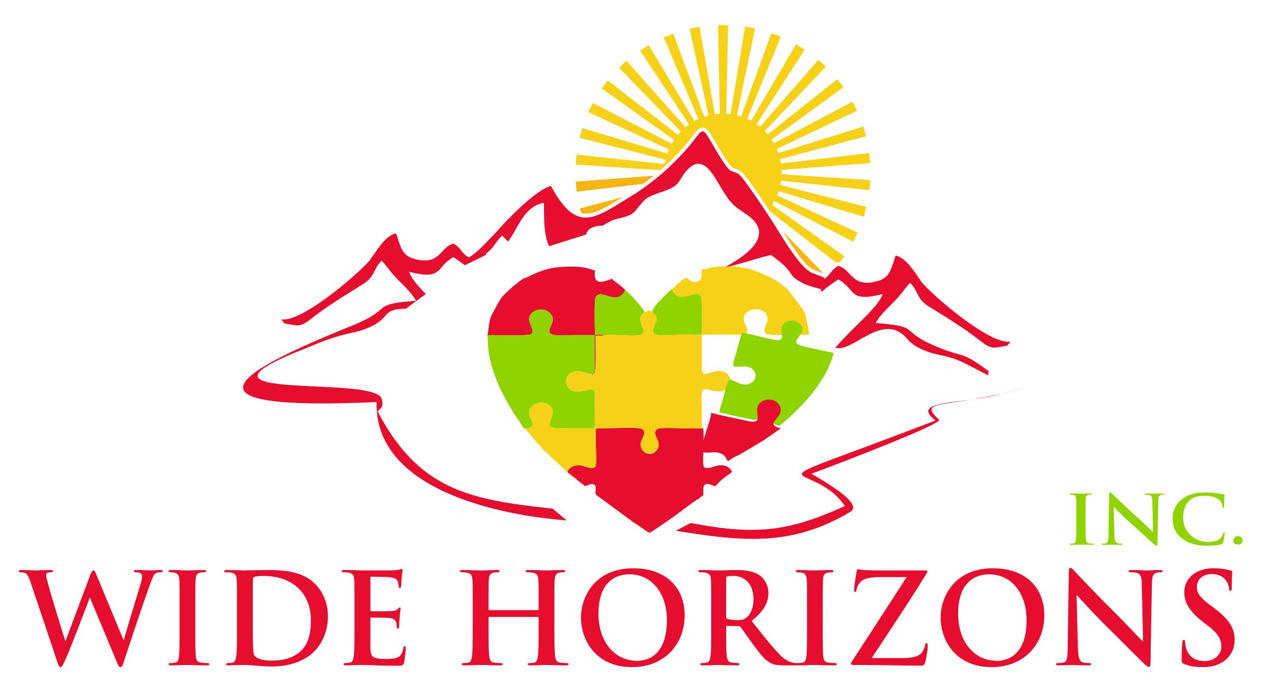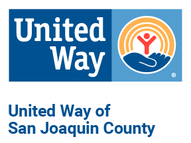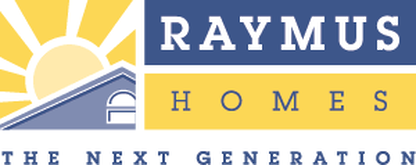Corporate Giving Opportunities - Social Responsibilities
Cause Related Marketing
If you are a leader or involved in marketing within your corporation large or small and would like to incur benefits of cause related marketing (CRM) partnership then please contact Wide Horizons, Inc. (WHI). A CRM- WHI partnership provides positive public relations, improved customer relations, and additional marketing opportunities positioned as a corporate leader within San Joaquin County supporting a unique and diverse population of young adults aspiring to contribute to the workforce and community through meaningful employment.
Matching Gifts
Matching gifts sound like a pretty straightforward idea, and they are! Matching gifts are a great way for individuals to maximize the donations they make to nonprofits. Companies that implement matching gift programs will contribute to a nonprofit that an employee donates to, usually matching their donation at a 1:1 ratio. Some companies, however, will match gifts at up to a 4:1 ratio! Employees must submit matching gift paperwork either electronically or manually in order to take advantage of their employers’ matching gift programs. Nonprofits benefit from matching gift programs by receiving twice as many donations as they normally would. Employees benefit from matching gifts by maximizing their donations with little effort. Companies benefit by contributing to a cause that their employees care about. Everyone wins!
Example: Henry, an employee at XYZ Inc., donates $500 to a nonprofit organization. After submitting a form to the HR department or through an online portal, Henry doubles his donation. XYZ matches the employees’ donations at a 1:1 ratio, meaning that the nonprofit receives $1,000 instead of $500.
Fundraising Matches
Fundraising matches are very similar to matching gifts in that they provide nonprofits with a monetary donation after an employee has donated time or effort to the organization. When an employee participates in a walkathon or other type of fundraising event, their employer may match the money they raise through sponsorships or other donations. For instance, if Vicky Volunteer decides to participate in a run for a nonprofit and raises money from her friends and family, her employer may offer a program that matches those donations. Funds are usually matched at a 1:1 ratio and have a maximum ranging from $1,000 to $5,000.
Example: Boeing provides employees with $100 for every walk, run, or bicycle event that they participate in. Employees have until January 31st of the next year to submit their fundraising match request.
Dollars for Doers
Dollars for Doers is one of the most common giving programs that companies offer their employees. Also known as individual volunteer grants, Dollars for Doers programs essentially reward employees who take time out of their busy lives to donate their efforts to a nonprofit. There are usually thresholds that must be met in order for an employee to make the most of a Dollars for Doers program. For instance, a company might offer a $250 stipend to a nonprofit for every 15 hours that an employee volunteers there. Companies normally only provide grants to one nonprofit per employee per year. Regardless, employees can still maximize the impact that they make in their local communities by taking full advantage of Dollars for Doers programs.
Example: Chevron offers its employees and retirees a Dollars for Doers program that rewards 20 volunteer hours with $500 and 40 volunteer hours with $1,000.
Team Volunteer Grants
Team building is a great way for employees to connect with one another. But did you know that team volunteering can accomplish the same goal and can come with extra donations from volunteers’ employers? Some companies offer team volunteer grants which reward groups of employees who volunteer their time at a nonprofit together. Employees fill out a volunteer grant request form to have the funds donated to the nonprofit. Not only do employees feel a sense of accomplishment by volunteering for a worthy cause, but companies also get to demonstrate their philanthropy and dedication to bettering the community. Nonprofits receive time and money, and everybody wins!
Example: When five or more Walmart employees volunteer for at least a total of 25 hours, Walmart will donate $500. Additionally, Walmart will grant up to $5,000 if 50 or more associates volunteer. Each department can submit up to four volunteer grant requests per year.
Community Grants
While some corporate giving programs rely on employees to fill out forms and volunteer time and money, community grants must be pursued by the nonprofit itself. Community grants are offered by corporations who wish to see a positive impact in their local and global communities. Nonprofits can request community grants directly from companies during any time, but some corporations do have specific deadlines. Additionally, nonprofits can request disaster relief grants to help local communities during times of crisis.
Example: Walmart provides community grants between $250 and $2,500 depending on the quality of nonprofits’ applications for grants, the mission of the nonprofit, and the need of the organization.
Volunteer Support Programs
Volunteer support programs are a great way for companies to offer their products and services to the people who need them most. While not every company is able to donate through these programs, those that do assist nonprofits by offering:
Example: Microsoft provides affordable access to their technology and services to nearly 90,000 nonprofits every year. These nonprofits are located in 125 countries, and the collective value of the provided software is almost $950 million.
Automatic Payroll Deductions
For employees who wish to effortlessly donate to a worthy cause, automatic payroll deductions are one of the easiest ways to regularly contribute to a nonprofit organization. However, companies usually limit the type of nonprofit their employees can contribute to. For instance, if a company has a specific interest in sustainability and the environment, it might restrict employees’ donations to nonprofits whose missions most closely aligns with theirs. However, once a nonprofit is on a company’s list of approved organizations, automatic payroll deductions are a great way to receive ongoing, predictable donations.
Example: EarthShare is an employee engagement and philanthropy program offered at hundreds of private and public sector workplaces across the USA. EarthShare @ Work connects donors with environmental and conservation charities. The Georgia chapter of EarthShare alone provides donations to over 70 nonprofits in the state.
Internal Employee Fundraising
How can a nonprofit expect random people to give to its cause if its employees won’t even contribute? This is where internal fundraising campaigns come in. By encouraging nonprofit employees to give back and volunteer to support the cause, nonprofit organizations can help increase the chances that outsiders will pick up their own charitable torches and follow suit. It’s easier to cultivate a relationship with people you already know than to start a brand new one. By looking inward, nonprofits can benefit from donations and volunteer efforts without leaving the office.
Annual Giving
Most companies promote year-long giving, but some employers also encourage donations at certain times of the year. The most popular time for companies to promote employee giving is at the end of the year when individuals have a firmer grasp on how much money they can allocate for charitable contributions. However, nonprofits should keep tabs on all companies who run similar donation promotions. Every company is different, and nonprofit organizations can miss out on big donations by not reaching out to donors at these critical times.
Example: Liberty Global fund raises money for men’s health during the month of November. In past years, over 400 employees have raised $75,000 in a single month. Liberty Global matched that month’s donation, doubling it to $150,000.
Cause Related Marketing
If you are a leader or involved in marketing within your corporation large or small and would like to incur benefits of cause related marketing (CRM) partnership then please contact Wide Horizons, Inc. (WHI). A CRM- WHI partnership provides positive public relations, improved customer relations, and additional marketing opportunities positioned as a corporate leader within San Joaquin County supporting a unique and diverse population of young adults aspiring to contribute to the workforce and community through meaningful employment.
Matching Gifts
Matching gifts sound like a pretty straightforward idea, and they are! Matching gifts are a great way for individuals to maximize the donations they make to nonprofits. Companies that implement matching gift programs will contribute to a nonprofit that an employee donates to, usually matching their donation at a 1:1 ratio. Some companies, however, will match gifts at up to a 4:1 ratio! Employees must submit matching gift paperwork either electronically or manually in order to take advantage of their employers’ matching gift programs. Nonprofits benefit from matching gift programs by receiving twice as many donations as they normally would. Employees benefit from matching gifts by maximizing their donations with little effort. Companies benefit by contributing to a cause that their employees care about. Everyone wins!
Example: Henry, an employee at XYZ Inc., donates $500 to a nonprofit organization. After submitting a form to the HR department or through an online portal, Henry doubles his donation. XYZ matches the employees’ donations at a 1:1 ratio, meaning that the nonprofit receives $1,000 instead of $500.
Fundraising Matches
Fundraising matches are very similar to matching gifts in that they provide nonprofits with a monetary donation after an employee has donated time or effort to the organization. When an employee participates in a walkathon or other type of fundraising event, their employer may match the money they raise through sponsorships or other donations. For instance, if Vicky Volunteer decides to participate in a run for a nonprofit and raises money from her friends and family, her employer may offer a program that matches those donations. Funds are usually matched at a 1:1 ratio and have a maximum ranging from $1,000 to $5,000.
Example: Boeing provides employees with $100 for every walk, run, or bicycle event that they participate in. Employees have until January 31st of the next year to submit their fundraising match request.
Dollars for Doers
Dollars for Doers is one of the most common giving programs that companies offer their employees. Also known as individual volunteer grants, Dollars for Doers programs essentially reward employees who take time out of their busy lives to donate their efforts to a nonprofit. There are usually thresholds that must be met in order for an employee to make the most of a Dollars for Doers program. For instance, a company might offer a $250 stipend to a nonprofit for every 15 hours that an employee volunteers there. Companies normally only provide grants to one nonprofit per employee per year. Regardless, employees can still maximize the impact that they make in their local communities by taking full advantage of Dollars for Doers programs.
Example: Chevron offers its employees and retirees a Dollars for Doers program that rewards 20 volunteer hours with $500 and 40 volunteer hours with $1,000.
Team Volunteer Grants
Team building is a great way for employees to connect with one another. But did you know that team volunteering can accomplish the same goal and can come with extra donations from volunteers’ employers? Some companies offer team volunteer grants which reward groups of employees who volunteer their time at a nonprofit together. Employees fill out a volunteer grant request form to have the funds donated to the nonprofit. Not only do employees feel a sense of accomplishment by volunteering for a worthy cause, but companies also get to demonstrate their philanthropy and dedication to bettering the community. Nonprofits receive time and money, and everybody wins!
Example: When five or more Walmart employees volunteer for at least a total of 25 hours, Walmart will donate $500. Additionally, Walmart will grant up to $5,000 if 50 or more associates volunteer. Each department can submit up to four volunteer grant requests per year.
Community Grants
While some corporate giving programs rely on employees to fill out forms and volunteer time and money, community grants must be pursued by the nonprofit itself. Community grants are offered by corporations who wish to see a positive impact in their local and global communities. Nonprofits can request community grants directly from companies during any time, but some corporations do have specific deadlines. Additionally, nonprofits can request disaster relief grants to help local communities during times of crisis.
Example: Walmart provides community grants between $250 and $2,500 depending on the quality of nonprofits’ applications for grants, the mission of the nonprofit, and the need of the organization.
Volunteer Support Programs
Volunteer support programs are a great way for companies to offer their products and services to the people who need them most. While not every company is able to donate through these programs, those that do assist nonprofits by offering:
- Computers and computer programs, Consulting services, Food, Marketing strategies, Other tangible products
Example: Microsoft provides affordable access to their technology and services to nearly 90,000 nonprofits every year. These nonprofits are located in 125 countries, and the collective value of the provided software is almost $950 million.
Automatic Payroll Deductions
For employees who wish to effortlessly donate to a worthy cause, automatic payroll deductions are one of the easiest ways to regularly contribute to a nonprofit organization. However, companies usually limit the type of nonprofit their employees can contribute to. For instance, if a company has a specific interest in sustainability and the environment, it might restrict employees’ donations to nonprofits whose missions most closely aligns with theirs. However, once a nonprofit is on a company’s list of approved organizations, automatic payroll deductions are a great way to receive ongoing, predictable donations.
Example: EarthShare is an employee engagement and philanthropy program offered at hundreds of private and public sector workplaces across the USA. EarthShare @ Work connects donors with environmental and conservation charities. The Georgia chapter of EarthShare alone provides donations to over 70 nonprofits in the state.
Internal Employee Fundraising
How can a nonprofit expect random people to give to its cause if its employees won’t even contribute? This is where internal fundraising campaigns come in. By encouraging nonprofit employees to give back and volunteer to support the cause, nonprofit organizations can help increase the chances that outsiders will pick up their own charitable torches and follow suit. It’s easier to cultivate a relationship with people you already know than to start a brand new one. By looking inward, nonprofits can benefit from donations and volunteer efforts without leaving the office.
Annual Giving
Most companies promote year-long giving, but some employers also encourage donations at certain times of the year. The most popular time for companies to promote employee giving is at the end of the year when individuals have a firmer grasp on how much money they can allocate for charitable contributions. However, nonprofits should keep tabs on all companies who run similar donation promotions. Every company is different, and nonprofit organizations can miss out on big donations by not reaching out to donors at these critical times.
Example: Liberty Global fund raises money for men’s health during the month of November. In past years, over 400 employees have raised $75,000 in a single month. Liberty Global matched that month’s donation, doubling it to $150,000.
++Wide Horizons, Inc. would like to thank Rev. Wayne G. Richardson, CFRE, and Gospel Center Rescue Mission for the use of this material and numerous fundraising recommendations.







